This is the transcript for Book One, episode 7 of The Lion and the Sun podcast: The Great War about World War 1 and its impact on Iran. Listen to this episode on Apple Podcasts, Spotify or all other podcast platforms.
The Archduke’s Visit to Sarajevo in 1914
The streets of Sarajevo in Bosnia Herzegovina were bustling with excitement and tension as the Austrian monarchy’s motorcade made its way through the city on a hot summer day in 1914. The person leading the visit was Archduke Franz Ferdinand. A member of the Austrian royal family and the heir to the Austro-Hungarian throne at the turn of the 20th century.
Franz Ferdinand was known for his progressive views and his efforts to modernize the Austro-Hungarian Empire, a multi-ethnic and multi-cultural state. He advocated for greater autonomy for the various ethnic groups within the empire and favoured a federal system of government. However, his vision was not universally embraced.
On June 28th, 1914, during a state visit to Bosnia-Herzegovina, a region recently annexed by Austria, the Archduke’s presence was seen as a symbol of oppression by many locals. His visit was flagged by many officials as the perfect opportunity for an act of uprising by the nationalists. But so far everything was going according to the plan.
Failed Assassination Attempt on Archduke Franz Ferdinand
As the Archduke’s car approached the Latin Bridge, a loud boom filled the quarter and deafened the many visitors gathered to welcome the young prince. An explosion shattered the peaceful atmosphere and sent shards of metal and glass flying in every direction.
The air was filled with the sound of screams and cries of terror as people scrambled to flee the scene.
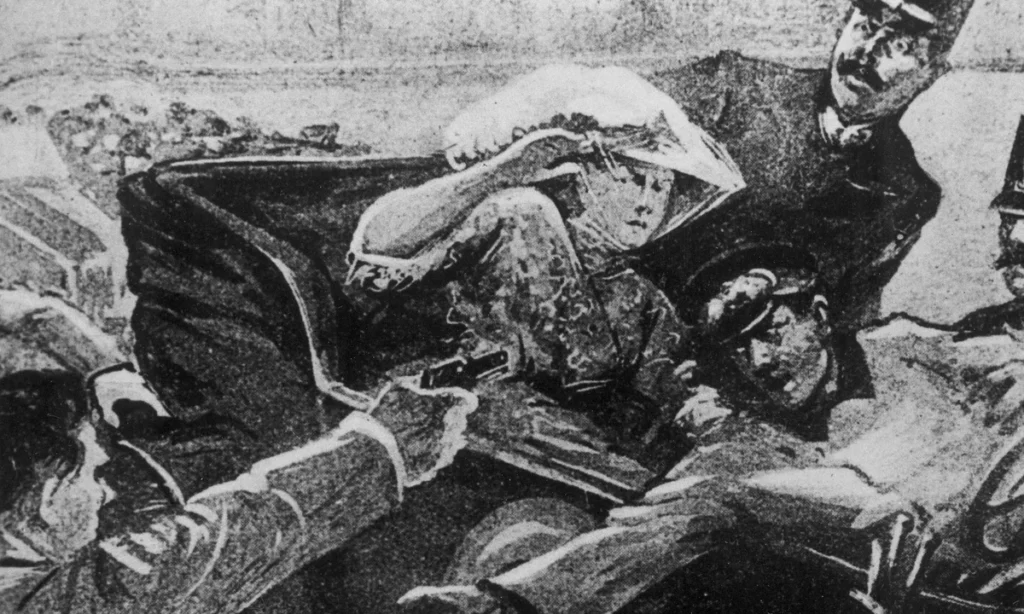
In the aftermath of the explosion, several bystanders lay injured and dying, their bodies turned white from the shock, their clothes stained with blood. The once-celebratory atmosphere had turned into one of shock and horror with people still in disbelief of the attack they had witnessed. But to the surprise of the bystanders and out of the dust and ashes, Archduke left his vehicle unscattered. The heir to the throne was alive and well.
Amidst the chaos, Nedeljko Čabrinović, the man responsible for the bombing and the assassination attempt, fled the scene. Knowing he had no chance of escaping, Nedeljko swallowed a cyanide pill and jumped into the nearby Miljacka River. But the pill was old and ineffective, and the river was only a few inches deep, so he was quickly apprehended by authorities.
Who Was Behind the Sarajevo Bombing
The failed assassin’s interrogation revealed that the Serbian nationalist group known as the Black Hand was behind the attack. The Black Hand sought to unify all Slavic peoples of the Balkans under Serbian control and viewed the Austro-Hungarian Empire, including Bosnia and Herzegovina, as a major impediment to their goal. They were determined to take action to achieve their collective dream, and the assassination of Archduke Franz Ferdinand presented an opportunity to make their voices heard.
After the assassination, Ferdinand’s advisors recommended the visit be cancelled and for the archduke to be transferred into a safe zone.
But Franz believing the worst to be over, insisted on carrying on with the tour. He wanted to showcase his courage to the people and make a case for his strength in ruling the empire, not knowing that Nedeljko wasn’t the only agent put on the path of the Archduke.
The Archdukes Journey Continues
After the news of the failed bombing spread, Gavrilo Princip felt like the mission he believed in had failed. He was one of several assassins who had been stationed along the route of the motorcade, each as a reassurance to take a shot at the Archduke in case the other failed. But upon hearing the news, Gavrilo gave up his position and strolled aimlessly around the streets of the city.
As the visit continued, Franz Ferdinand and his wife headed toward visiting those wounded in the assassination attempt. To ensure the safety of Archduke Franz Ferdinand during the second wing of his already explosive tour, the governor suggested a slight change of route.
The plan was to continue along the river. Where the street was broader and offered better protection, but nobody had informed the driver of the change in route. That’s why upon reaching the famous Latin Bridge in the old town, the driver unexpectedly turned right, sticking to the original route. The Archduke’s team immediately recognized the error and shouted at the driver to stop, but as he tried to reverse, the engine jammed, leaving the Archduke and his wife stranded.
It was there that, by pure chance, Gavrilo Princip happened to be passing by and saw the royal entourage right in front of his eyes.
Assassination 2.0: Gavrilo Princip’s Takes His Shot
Gavrilo Princip couldn’t believe his luck. His comrades had already missed their chance to assassinate the Archduke. But now he had the perfect opportunity to finish the job.
All the stars had aligned, and Princip seized the moment.
Two shots were immediately fired, aimed at both Archduke Ferdinand and Governor Potiorek. As Princip was shooting the second shot, a bystander grabbed his arm. It causied him to miss the Governor and hit the Archduke’s wife, Sophie. She died instantly, and Franz Ferdinand passed away within half an hour.
Gavrilo Princip was only 19 years old when he assassinated the Archduke. Yet despite his young age, he set off a chain of events that eventually led to the outbreak of the biggest war the world had ever seen. A catastrophic global conflict that claimed the lives of millions of people. A war that forever changed the political and social landscape of not only Europe but the world as a whole. Including a country far into the east, detached from Europe and with its own set of problems and internal crises.
The shots fired by Gavrilo Princip were about to forever alter the course of history in Persia.
The Board is Set: Lead Up to WW1
In 1913, Europe was a ticking time bomb of political intrigue, dangerous alliances, and explosive tensions. Tensions that threatened to plunge the continent into chaos. The Great Powers of Europe were locked in a deadly game of brinksmanship, with each nation plotting for power and influence in a high-stakes race to the top.
As the arms race between the Great Powers escalated, tensions between the rival alliances grew ever more acute. Nationalistic fervour ran high, with each nation striving to prove its worth on the world stage. But beneath the surface, a deadly game of chess was being played. With each side maneuvering for advantage in the face of an increasingly unstable geopolitical landscape.
The assassination of Franz Ferdinand was the culmination of these mounting tensions. The match that set the continent and ultimately, the world ablaze.
After the death of Archduke, Austria-Hungary accused Serbia of being behind the attack. They declared war on Serbia on July 28, 1914. During this period, Russia had close cultural and political ties with Serbia. Naturally, after Austria-Hungary’s declaration, they mobilized their forces to defend Serbia. Finally, France, which had a longstanding alliance with Russia, mobilized its forces to support their ally.
As Russia and France, prepared for war, Germany, which was an ally of Austria-Hungary, declared war on Russia and France and invaded Belgium as part of their larger military strategy. Britain, which had a treaty with Belgium, declared war on Germany in response to the invasion.
Persia’s Neutrality During the Early Stages of World War I
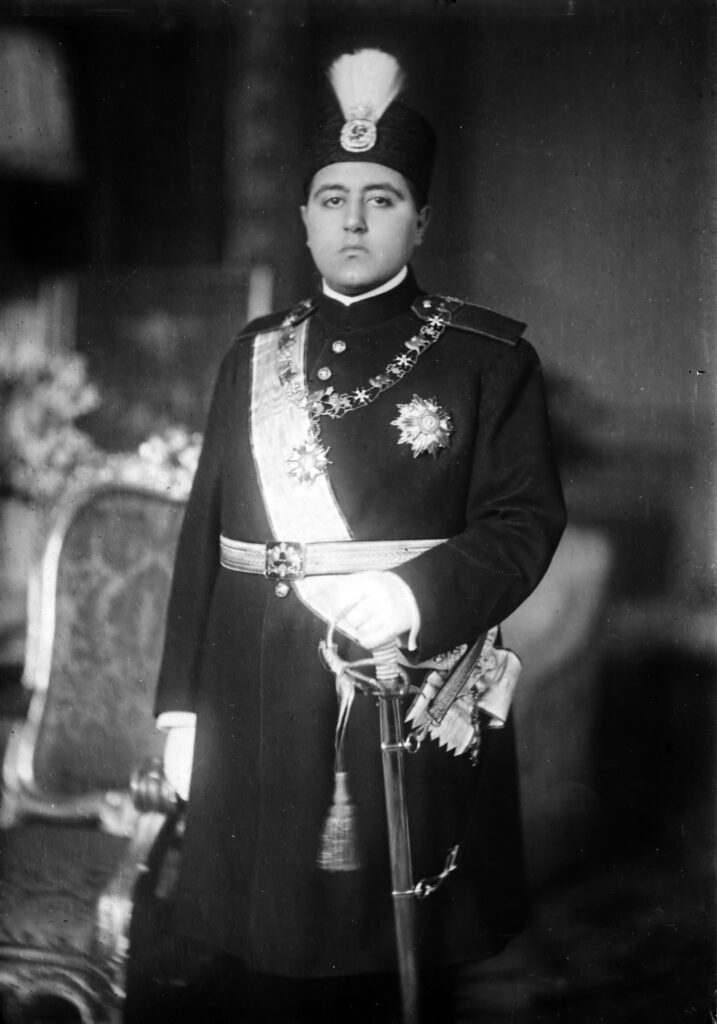
While in Europe, the countries were picking sides in the biggest of wars yet to come, far in the east and in the empire of Persia, the people were getting ready to welcome their new king.
In July 1914, the young Ahmad Shah was named the official king of Persia. He ascended to the throne at the age of 16. Despite his young age, Ahmad Shah knew that with its weakened government and the continuous turmoil, it would be best to stay out of the bickering in Europe. So as the first shots were being exchanged on the Western Front, Persia announced its policy of neutrality towards the war.
Even from the start, Iranians knew that neutrality would be easier said than done. Almost in every corner, Iran was surrounded by participating countries in the conflict. In the North and South, Russia and Britain were fighting for the allies while in the West, the Ottoman Empire, then controlled by the Young Turks, had decided to align itself with Germany and Austria-Hungary.
This troublesome position turned Iran into the perfect spot for a host of proxy wars between the nations.
Conflicts in Iran During World War 1
In the northwest, the Russians and Ottomans decided to settle their disputes through a series of conflicts in the provinces of Azerbaijan, Kermanshah and Hamadan. The control of these provinces repeatedly changed hands between the two powers. During this process numerous Iranians lost their lives, their houses and their livelihoods.
Both the Ottoman Turks and Tsarist Russians engaged in acts of violence against urban and rural populations. Including looting, rape, abduction, and destruction of property. The Young Turks displaced 1.5 million Armenians in a genocidal campaign. Many refugees sought safety in nearby Iranian towns like Tabriz and Hamadan. There cities also suffered from typhus outbreaks and starvation due to their occupations.
The war also led to the closure of various trade routes across the country. As mentioned before, Iran was reliant on trade with Russians and the Ottomans. The war between these two parties put a stop to this essential exchange of resources.
This combined with the military occupation of various Iranian cities led to a disruption in Iran’s agricultural harvest and importation and created the deadliest famine in the country’s history with more than 2 million casualties.
But despite all of this, despite the famine, the deaths and the atrocities committed by the Ottomans in the West, there was still a great deal of support for the central powers in Iran, especially when it came to Germany.
German Influence in Persia: Nationalists’ Hope for Liberation
In 1903, Germans began the process of building the Berlin-Baghdad Railway. The railway intended to connect Berling to Baghdad, where the Germans wanted to establish a port on the Persian Gulf. This ambitious project brought the capacities of this newly established world power to the attention of Persian nationalists.
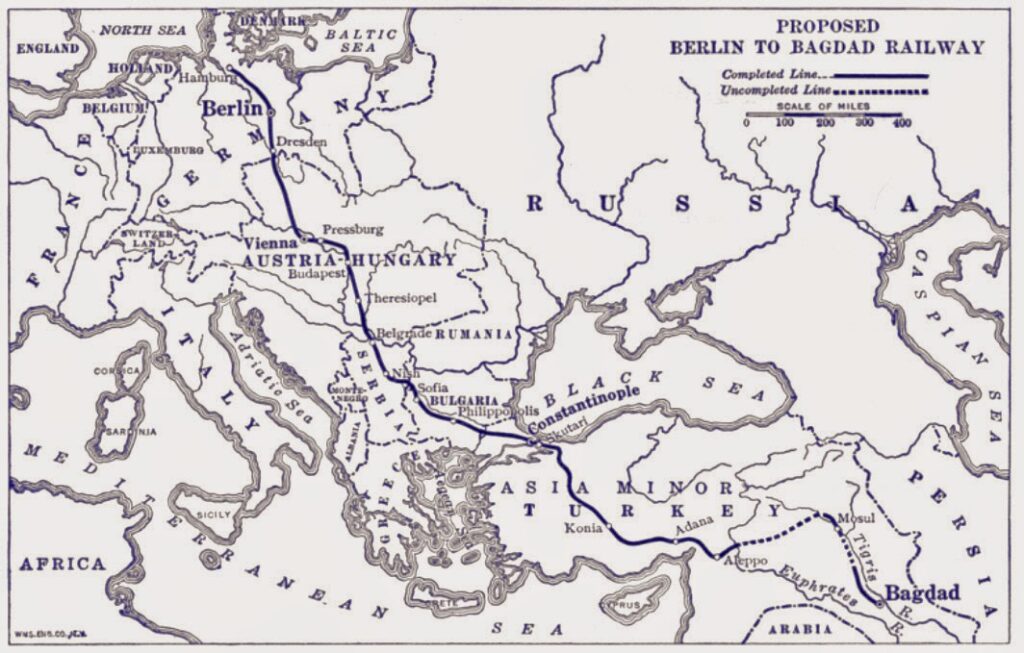
The foundation of the German Empire was a result of the ambitions of the Kingdom of Prussia under the leadership of Otto von Bismarck. Through a series of wars from 1864 to 1871, Bismarck sought to consolidate Prussian dominance over the German-speaking states. These wars began with the Danish War, followed by the Austro-Prussian War, and culminated in the Franco-Prussian War against France.
The decisive victory against France in 1871 created a sense of national unity among the German states. In the aftermath, representatives of these states gathered at the Palace of Versailles. Where King Wilhelm I of Prussia was proclaimed German Emperor, or “Kaiser”, on January 18, 1871.
Iranian nationalists held a high regard for Bismarck due to his role in unifying Germany. The idea of a shared Aryan heritage appealed to Persians. This positioned Germany as a preferable alternative to Russian and British influence. Also, Germany’s alliance with the Young Turks, another nationalistic faction in the region, kindled hope among Iranians for potential liberation from the sway of their northern and southern neighbours.
Early Propaganda in Iran: Germany’s Strategic Moves
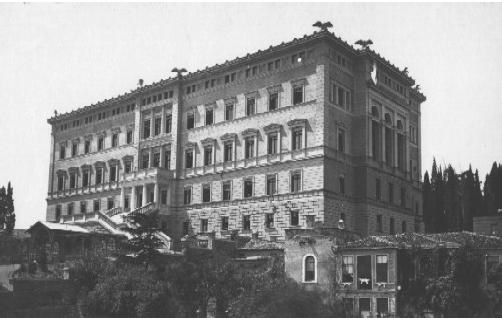
Germany, aware of this international aspiration, began what could be considered the very first propaganda campaign in the region. The objective of this clandestine operation was to sway the opinion of Persians against Germany’s rivals and gather support for its growing influence.
On the eve of the war, Germany established the Intelligence Bureau of the Orient. The agency promoted subversive and nationalist agitations in Persia and various other eastern countries. In Persia, these efforts were led by Wilhelm Wassmuss. Wilhelm, along with other German agents took advantage of Iranian’s resentment toward allies to harness support in the central and southern parts of the country.
Tribal Alliances in Persia: How German Agents Built Support
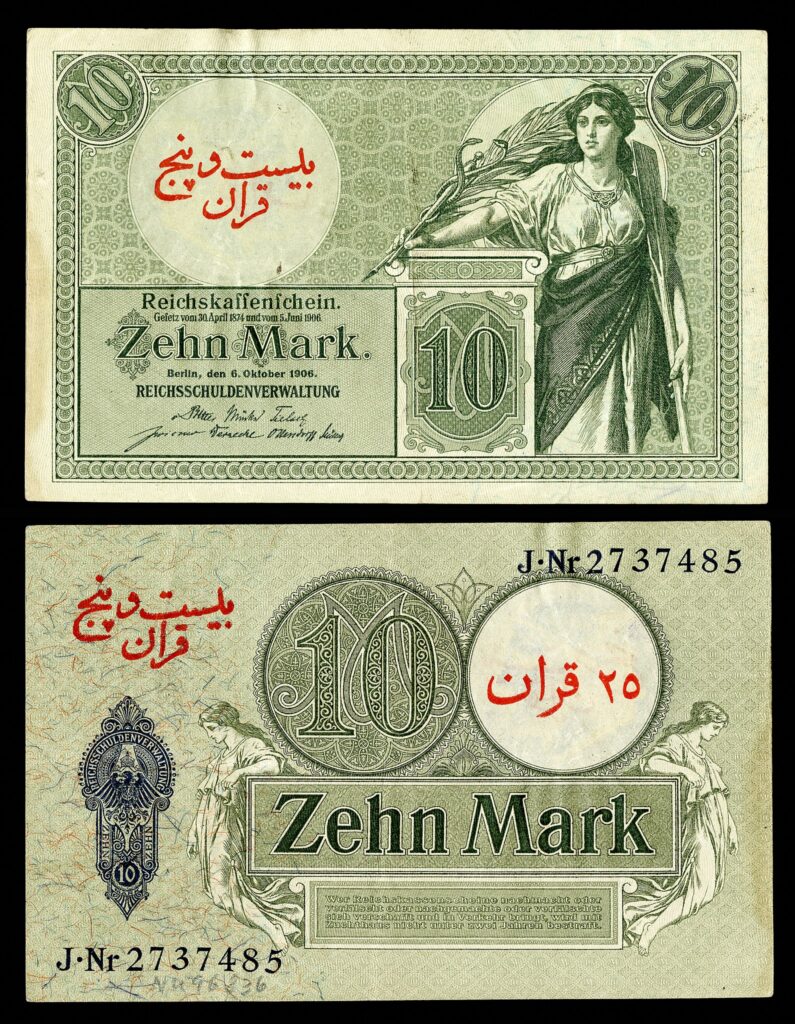
The German agents had great knowledge about local tribes. They knew the influential players in each region, who to target and what to offer them. For some this was the promise of liberty. For other more aggressive tribes, it was ammunition and ammo for their fight. The offer for the rest, it was vast financial resources or at least the offer of it. They even went as far as issuing official German marks with their Persian equivalents printed on the banknotes.
Using these extrinsic & intrinsic incentives, they were able to create a network of operative and loyal connections to do their bidding throughout the vast Persian empire. A network that came in handy much sooner than they anticipated.
Redrawing Zones of Influence in Iran During World War 1
As the war dragged on, the Allies came to an unspoken agreement. They agreed the 1907 zones of influence no longer applied to Persia. The country was no longer separated into the northern Russian zone and the southern British. Now Iran in its entirety was fair play. As long as Germany and the Ottoman Empire were forbidden from operating or even entering the country.
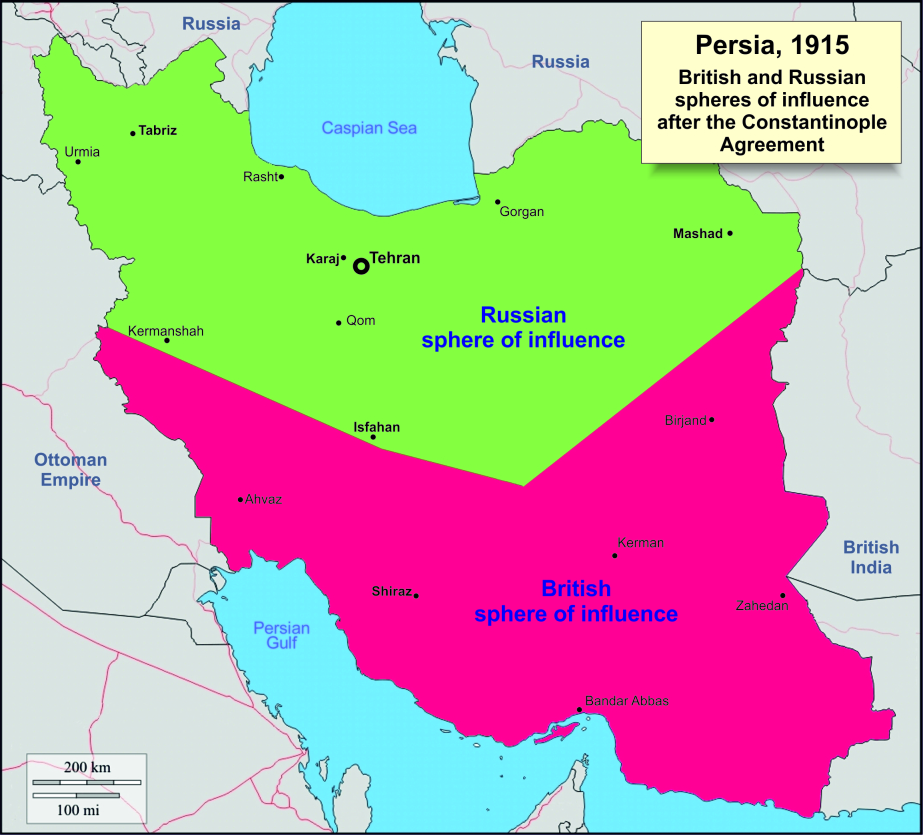
The British and Russians came and went as they pleased. They managed to capture any city that was in their way. Using the fear of them falling into the hands of the enemy as excuse.
Russia’s Expansion: Occupation of Northern Persia in 1915
By late 1915 and through the Persian Campaign, Russians had captured most of Persia’s northern territory. They planned on moving south and marching toward Tehran. They were worried that German influence would find its way to the government and sway Persia to take sides.
By conquering the capital they could make sure that allies would remain in control of the region.
In November 1915, Russians once again occupied Qazvin. Soon after, They sent a detachment to Karaj, only 43 km west of the capital. Seeing the march of the Russian army toward their capital, a group of Persian nationalists, consisting of the remaining constitutionalists from the battle of Tehran, liberal clergies, intellectuals and some journalists, formed the Committee for National Defense.
Backed by the German government, this group relocated to Qom. They wanted to plan and strategize for the worst. To find a way of keeping Iran’s sovereignty throughout the war.
A New Capital: Committee for National Defense’s Relocate Shah
In Qom, the committee came up with their most optimal solution. They would help move Ahmad Shah to Isfahan, where he would announce the relocation of the capital. With this relocation, the occupation of Tehran wouldn’t spell the end of Iran’s independence. Also the nationalists would have some extra time to assemble a plan of action to stand against the northern invaders.
Everything was set for Shah’s migration. But in the last minutes, and under heavy pressure from the British and Russians, Ahmad Shah abandoned the plan.
The allies assured the king that they would not attempt to capture the capital. They guaranteed that he would remain the King of Persia no matter the outcome of the war.
On the Run: Tehran’s Nationalists Forced Exodus
Losing the support of Tehran’s government and the monarchy, the committee members knew they were prime targets for Russian forces.
After a brief clash with Russian forces in Qom, the nationalists were forced to escape to the west and towards the Ottoman border. They were hoping that the proximity to the central powers, would give them a shield of protection. That they could continue their efforts from a distance.
The committee members, now known as Mohajereen or the immigrants, settled west of Kermanshah. Where the Ottomans had been able to defeat the British and secure the land.
There, with protection from the Turks and support from the Germans, they formed a provincial government in exile. This shadow government aimed to organize and lead another resistance movement. Similar to the one leading the battle of Tehran in 1909.
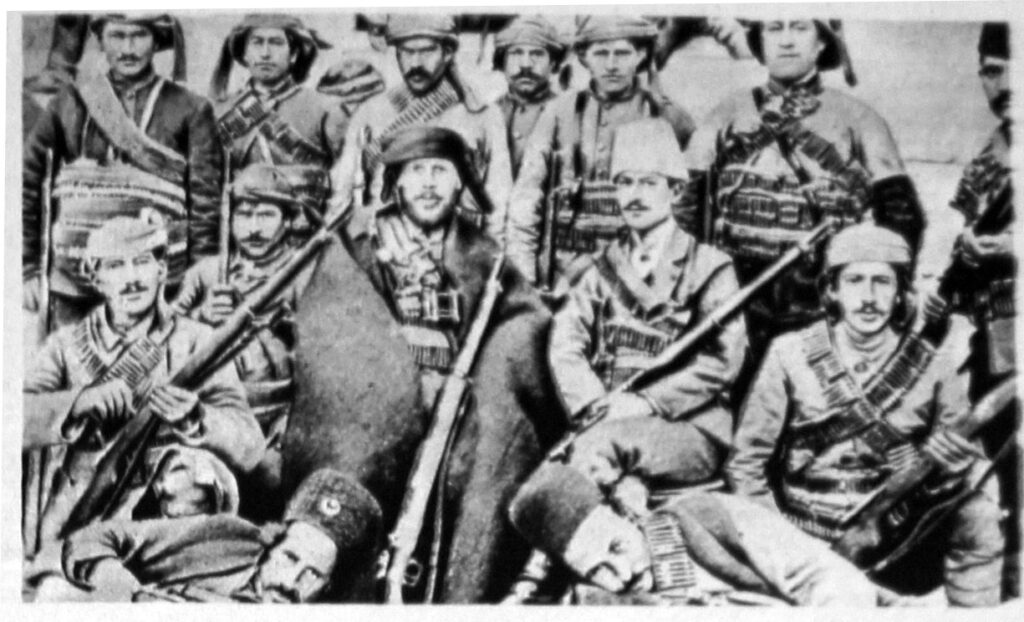
Comprising of ex-parliamentarians, intellectuals, military strategists, and clergymen, their plan hinged on a German-aided network of Iranian sympathizers to reignite the nationalist fervour.
Collapse of Resistance: The Defeat of Nationalist Forces
But all these plans failed to materialize when in April 1915. Russians were able to defeat the Ottomans in Kermanshah and re-capture the city. After their defeat, Mohajereen who were once again under the threat of extinction, moved further to the west and toward the regions of Kurdistan and Iraq.
The second wind the resistance was hoping for never arrived and as Germany’s prospects against the allies diminished, the nationalists’ resources dwindled in tandem. Ultimately, faced with dire circumstances, the members scattered, prioritizing their individual survival.
By 1917, the capture of Baghdad by the British and the Ottoman’s constant defeats at the hands of the Russians made it clear that there would be no recovery on the Western front like the one nationalists were hoping for. The two superpowers had managed to qual any remnants of resistance in western, central and southern Iran and with it, the thought of succumbing to foreign influence was lost yet again.
How World War I Shattered Iran
The great war was fought over a dispute far away from Iran. Yet, its shrapnel had blinded the eyes of the Iranians. So much so that they could no longer see their countries free from the looming shadow of infleunce.
The war tore the heart out of Iran. Genocide, famine, and rubble became its legacy. Millions perished, countless more lost their homes, and an entire nation grieved. Once a beacon of democracy and prosperity, Iran now lay shattered, its riches plundered, its sovereignty stolen. But even in this abyss, a glimmer of hope emerged on the Persian horizon.
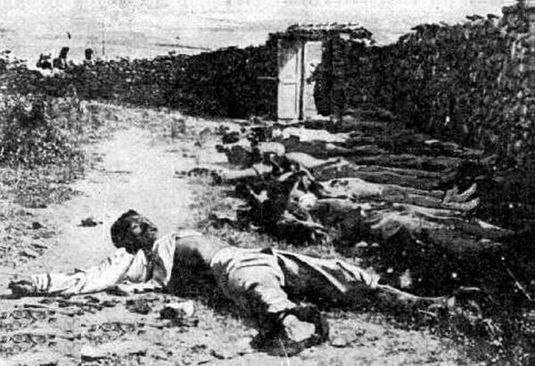
Although during World War 1, Russia had excelled at standing against its neighbouring foes, within its borders, the country was engulfed in political turmoil.
Russian Revolution: A Turning Point for Persian Sovereignty
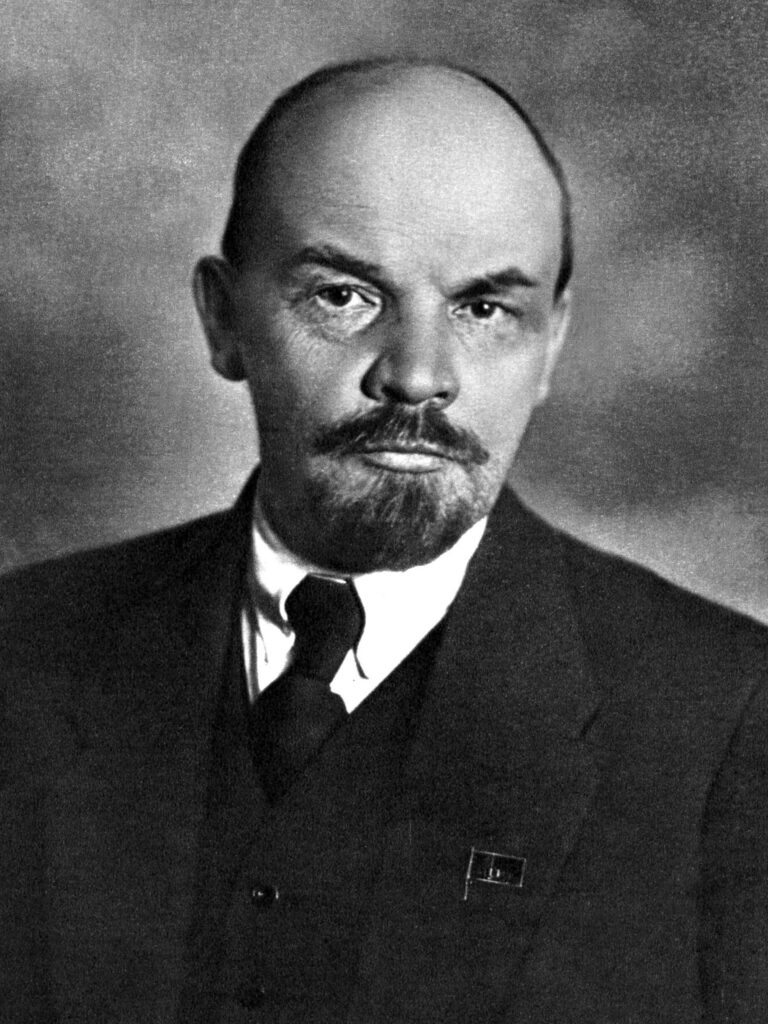
In 1917, Russia saw two major revolutions. The first, in February, ended the rule of the Tsar. A Provisional Government took over but struggled with issues like World War I and the economy. Seeing an opportunity, the Bolshevik Party, led by Vladimir Lenin, staged a second revolution in October and became the de facto ruler of the country.
By December 1917, the Bolsheviks had full reign of the central government. They had begun implementing their policies and consolidating power.
The collapse of the Russian empire meant that the country controlling half of Iran no longer existed. An immediate relief to all Persians no matter their political ideology.
Finding Love in Strange Places: The Soviet-Iranian Treaty
After the collapse of the Russian empire, the new Bolshevik regime, vulnerable and at the infancy of its power, wanted to make peace with Russia’s neighbours.
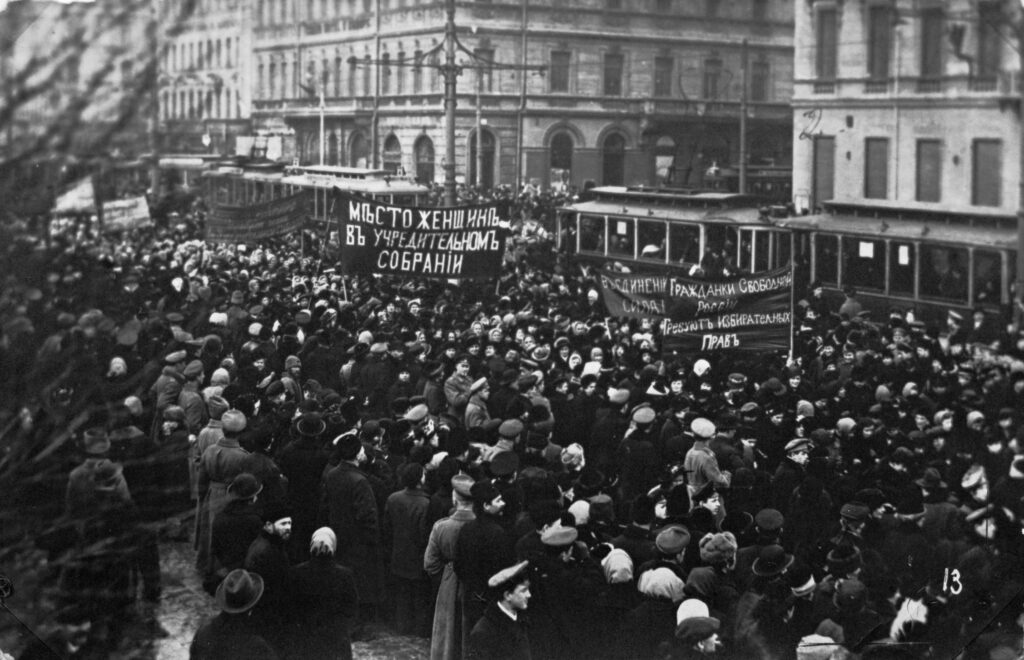
By the end of 1917, Lenin left the 1907 Anglo-Russian agreement. He denounced it as the West’s attempt at imperialism and playing god with the lives of other nations. Russia pleaded with the world to allow Iran to decide its own future. As a show of good faith, released Iran of all its loan commitments to the country. They also repealed all concessions granted to the Russian empire by Persians.
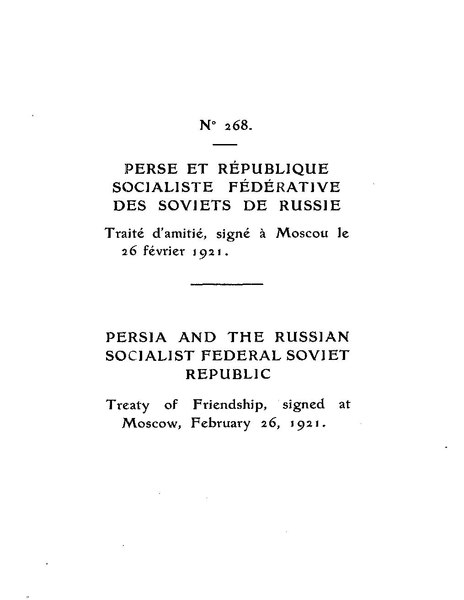
Now Iranians could breathe a sigh of relief. The empire that controlled half of Iran’s land had suddenly changed course and was giving Iranians a second chance at liberty.
The 1921 Soviet-Iranian Treaty of Friendship, negotiated by Iranian and Russian diplomates was signed on 26 February 1921 in Moscow. This treaty which survived despite all the British obstruction, marked a reset in the diplomatic relations between Soviet Russia and Persia. The treaty annulled all prior agreements between the two nations. It gave them control of the Russian Mortgage Bank and equal shipping rights in the Caspian Sea. It also had provisions to safeguard against hostile activities towards either nation by third parties.
Breaking free from the Russian influence gave Iranians a second wind and galvanized their fight for sovereignty. Shortly after the Russians exit from the 1907 agreement; the Persian government, once again headed by Najaf Qoli Khan Bakhtiary, the grand-vizir who had to resign after firing Morgan Shuster, denounced the whole deal and cancelled all concessions given to foreign governments.
Even after its darkest night, the dawn of Persia’s freedom was on the horizon, inevitable and imminent.
Oil and Opportunity: Britain’s Strategic Interests in Persia
But every silver lining had its cloud; and for Iran, this cloud took the form of a colonialist superpower. Just as Iran stepped out from under Russia’s oppressive shade, Britain, anxious about its regional standing, loomed larger, eager to prevent Iran from succumbing to the abyss of communism.
For the British, Persia was a strategic gem. It wasn’t just about regional influence; it was about military footholds. It was about critical land routes. But most importantly, it was about the black gold buried deep beneath Persian sands.
In the next episode of The Lion and the Sun, we’ll take a look at events of World War I from a different vantage point, the British perspective. We’ll see how the discovery of oil, their influence in the South and their localized army within the country, gave them the perfect opportunity to expand their presence and fill the void left by the Russians.

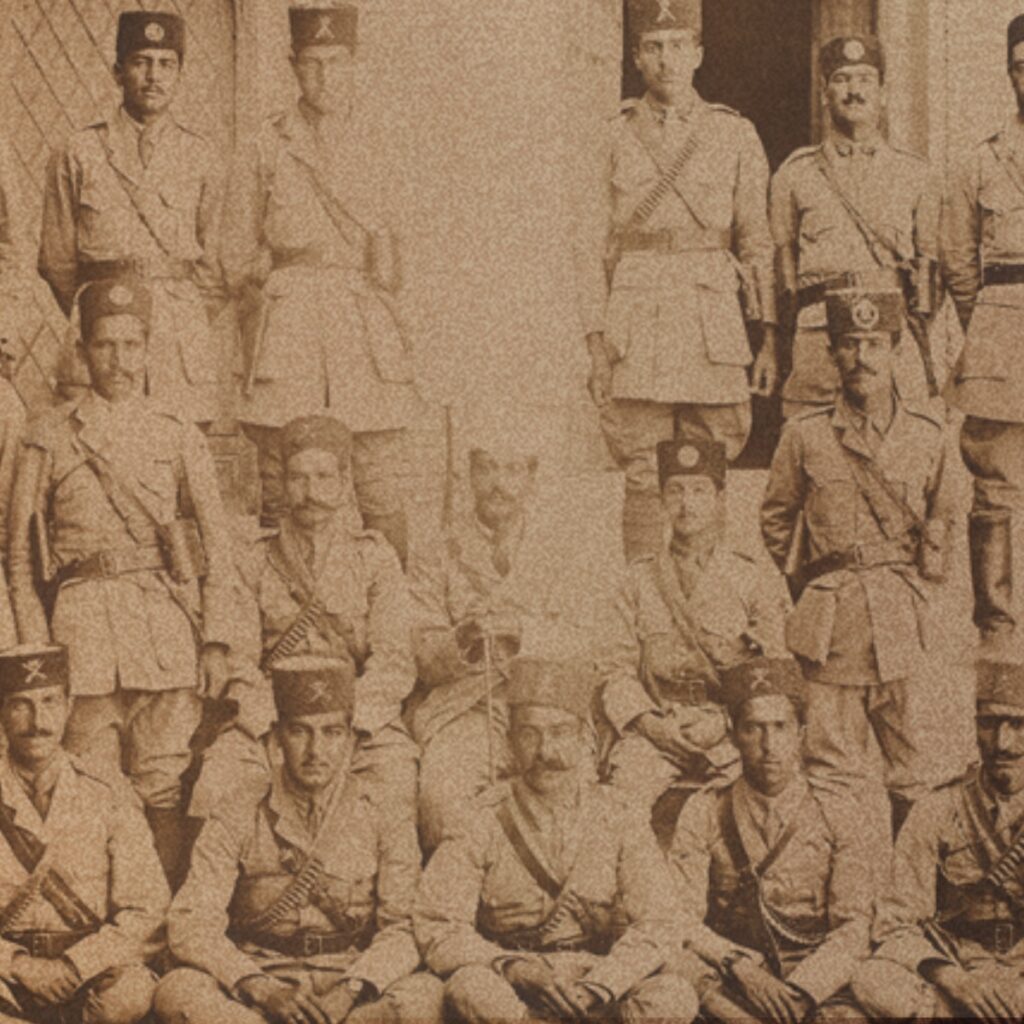
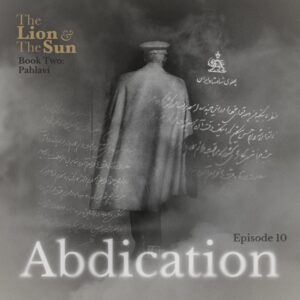
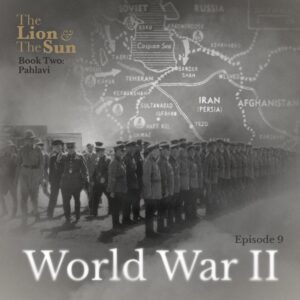

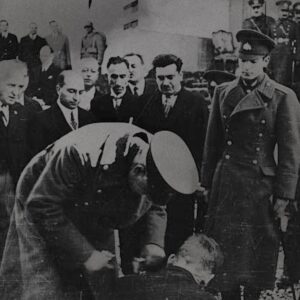
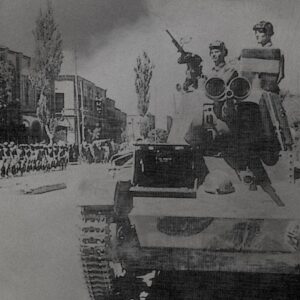
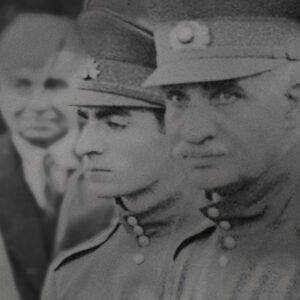
2 Responses